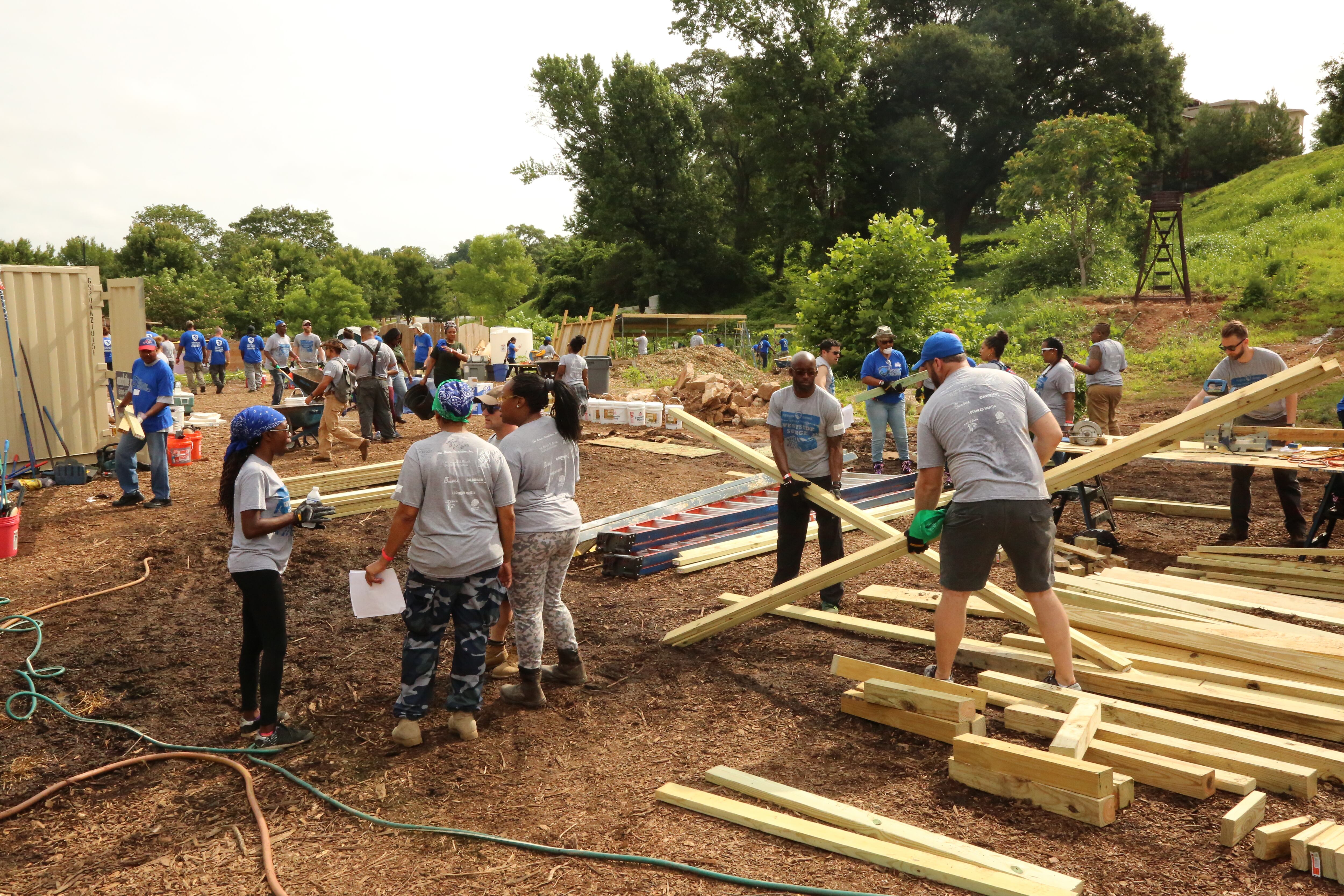Ask active duty service members why they joined the military and you’ll likely get several different answers. Some joined to get away from home and travel the world, others may have joined for that enticing signing bonus, others still for the education benefits and potential skills training they’d get once transitioning back into the civilian world. Some even joined the service intending on making a career of it.
Whatever the reason, there’s no doubt in many Americans' minds that the contributions service members make to the country is valuable. Some 64 percent of Americans look up to people who have served in the military, according to a 2019 poll conducted by the Pew Research Center.
In the same results, however, it was reported that many veterans find it difficult to transition back into civilian life, with more post—9/11 veterans reporting as such. Almost half of all post—9/11 veterans said it was somewhat or very difficult to do so – 32 percent and 16 percent , respectively.
For those veterans with combat experience, 46 percent said it was difficult. Compare that to just 18 percent of veterans without combat experience.
Many veterans find it difficult to secure meaningful and lasting jobs after the military. About 500,000 —or 5.5 percent — of the 8.7 million working—age veterans in America were looking for work in October, Military Times reported.
Veterans are service—minded
According to a 2018 report from the Corporation for National & Community Service, roughly 30 percent of all veterans — more than 5.6 million — volunteer and contribute roughly 630 million hours of service annually.
In 2019, some 61,000 volunteers gave 9.2 million hours of service specifically for the benefit of veterans, according to the Department of Veterans Affairs.
For many veterans, volunteering can work to ease the transition to civilian life, according to a 2017 study from Saint Louis University. The study looked at veterans volunteering with The Mission Continues, a nonprofit that partnered with other organizations to put veterans in meaningful leadership roles. That program ceased in 2018, but the organization has other programs focusing on community support.
During the pandemic, however, many of the Mission Continues programs and those of other veteran service organizations have had to evolve. We asked a few questions of some of the better—known veterans service organizations to have them offer a picture of what service with them would be like.
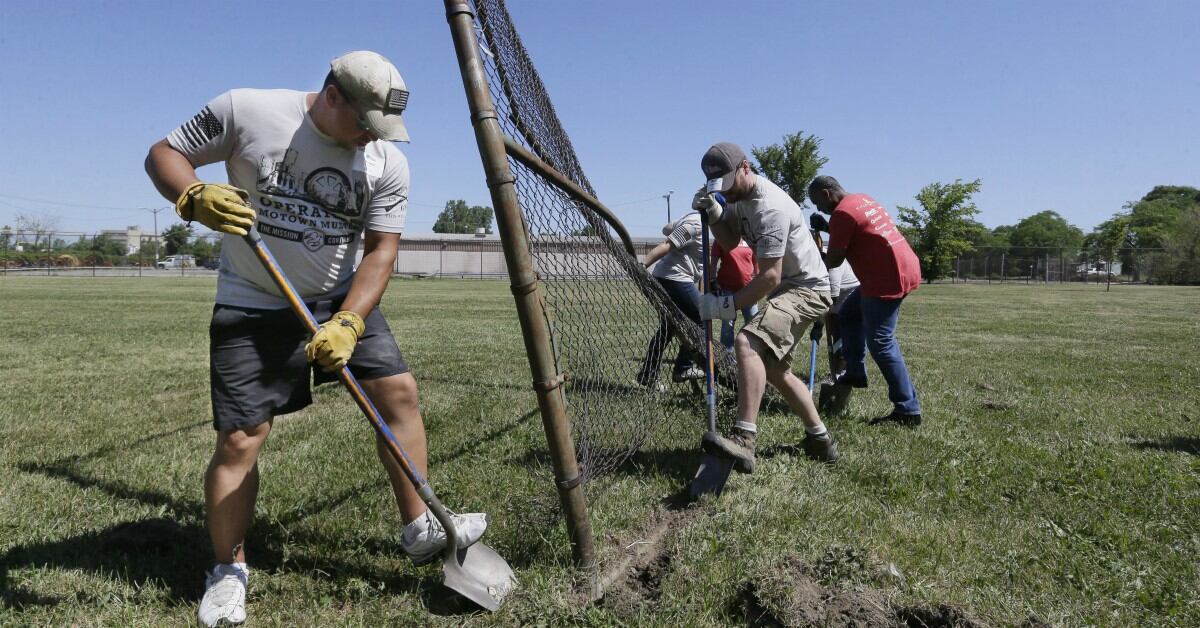
The latest from The Mission Continues, according to spokesperson Jen Parravani:
In response to the COVID-19 Pandemic we’ve launched Operation Nourish, a nationwide effort addressing the food shortage crisis by mobilizing our veteran volunteers in the distribution, growing, and supplementing of food support capacity. In the last five months, we’ve engaged over 1,600 volunteers and held more than 232 events to support the fight against hunger.
We have shifted our leadership programs for veterans — the Service Leadership Corps and Women Veterans Leadership Program — to virtual formats and recently graduated over 60 women veterans from the inaugural cohort of the Women Veterans Leadership Program.
This weekend we will be kicking off Operation Bayou City Blitz, a five day service initiative in Houston, TX that activates local veterans to address critical needs throughout five Houston-area neighborhoods. We’re encouraging local veterans and volunteers to sign up and serve with us if they’re interested! Due to COVID-19 restrictions, registration is limited.
What is your mission and what opportunities are there for veterans to volunteer?
At The Mission Continues, we’re on a mission to connect veterans with under-resourced communities. Our goal is to build a movement that empowers veterans to continue their service, and empowers communities with veteran talent, skills and preparedness to generate visible impact.
Our Service Platoon volunteer opportunities are open nationwide to all veterans, and can be found by visiting missioncontinues.org/get-involved. We welcome ALL volunteers to our platoons — veteran and non—veteran!
Our Leadership Programs develop personal and professional growth among veterans who are looking to lead in their communities. These programs (Service Leadership Corps and Women Veterans Leadership Program) are application based, and provide training on topics like professional networking, public speaking, asset based community development and more.
How does The Mission Continues differ from other VSOs?
We believe that service saves lives. Improving and addressing veteran’s mental health is the most important outcome of our work. We do this through a model that promotes personal and professional growth, connectedness, and positive community impact.
What can The Mission Continues offer to transitioning veterans?
The Mission Continues offers the chance to get connected with other like-minded veterans in service of your community! By serving with us now, veterans will know they are directly helping thousands of american families fight hunger in the wake of COVID-19.
What challenges has the current pandemic introduced to The Mission Continues and how have you overcome them?
COVID-19 has been tough on everyone’s mental health — in a survey of the veterans in our programs, nearly half (40 percent ) of our respondents reported feeling depressed while also feeling concern (46 percent ) for in-person gatherings. Additionally, 35 percent of respondents reported feelings of social isolation. Our volunteers quickly sprung into action and performed over 2,000 virtual “buddy checks” nationwide. By offering in-person and at-home service opportunities via Operation Nourish, we’ve found new ways to engage veterans with each other and with their communities during this time. Additionally, as previously mentioned, we successfully shifted our leadership programs to a virtual format to ensure we can continue to offer leadership development opportunities for our veterans.

The latest from AmVets — American Veterans, according to spokesperson Miles Migliara:
Recently AMVETS made an internal hiring move, promoting Air Force veteran, Bunmi Moses, to National Programs Director. In this position, Bunmi heads up all programs and many services offered by AMVETS to veterans and their families.
What is your mission and what opportunities are there for veterans to volunteer?
At AMVETS, we strive to enhance and safeguard the entitlements for all American Veterans who have served honorably and to improve the quality of life for them, their families, and the communities where they live through leadership, advocacy, and services. We advocate daily on Capitol Hill for legislation that closely resembles priorities voted on by our members. We assist in filing VA claims and appeals, guiding veterans through an oftentimes complex Veteran Affairs system. We help veterans find employment through career fairs, resume building, and interview resources, making the transition to civilian life a more seamless process.
Through our HEAL program, we ensure veterans with medical needs receive the help they have earned to access the best quality healthcare, including mental health and specialized services and live longer, healthier lives. These services are free. Though veterans are able to volunteer with AMVETS at the State and local level, many are familiar with our Veterans Affairs Volunteer Service (VAVS), where volunteers assist patients by augmenting staff in such settings as end-of-life care programs, foster care, community-based volunteer programs, hospital wards, nursing homes and veteran outreach centers.
How does AmVets differ from other VSOs?
Where membership in other large VSOs is limited to veterans of certain war—time eras, disabilities, or those who saw combat on foreign soil, AMVETS is the nation’s most inclusive Congressionally chartered veterans service organization, representing the interests of 20 million veterans. AMVETS is open to and fighting for all who honorably served in the United States military, including the Reserve and Guard. With more than 250,000 members nationwide, we are veterans serving veterans.
What can AmVets offer to transitioning veterans?
While AMVETS offers numerous programs and services (including those listed above) that can be found at amvets.org, our most popular programs sought out by transitioning vets are claim filing, Career Center, and HEAL program.
What challenges has the current pandemic introduced to AmVets and how have you overcome them?
COVID-19 has forced AMVETS to pivot in how we serve veterans and their families. We’re proud of our many posts and departments across the nation, as they create care packages for homeless vets and those in need, masks to distribute to their communities, and socially-distanced, COVID-friendly food & blood drives. Recently, AMVETS accepted a generous offer from the Taiwanese Economic & Cultural Representative Office of 250,000 masks, which AMVETS plans to distribute to the community. AMVETS also teamed up with Military Times & several VSOs to provide our Presidential candidates with the most prominent concerns veterans face today, and ask for their solutions to them. COVID-19 has changed, but not ceased, AMVETS' efforts to serve American veterans.
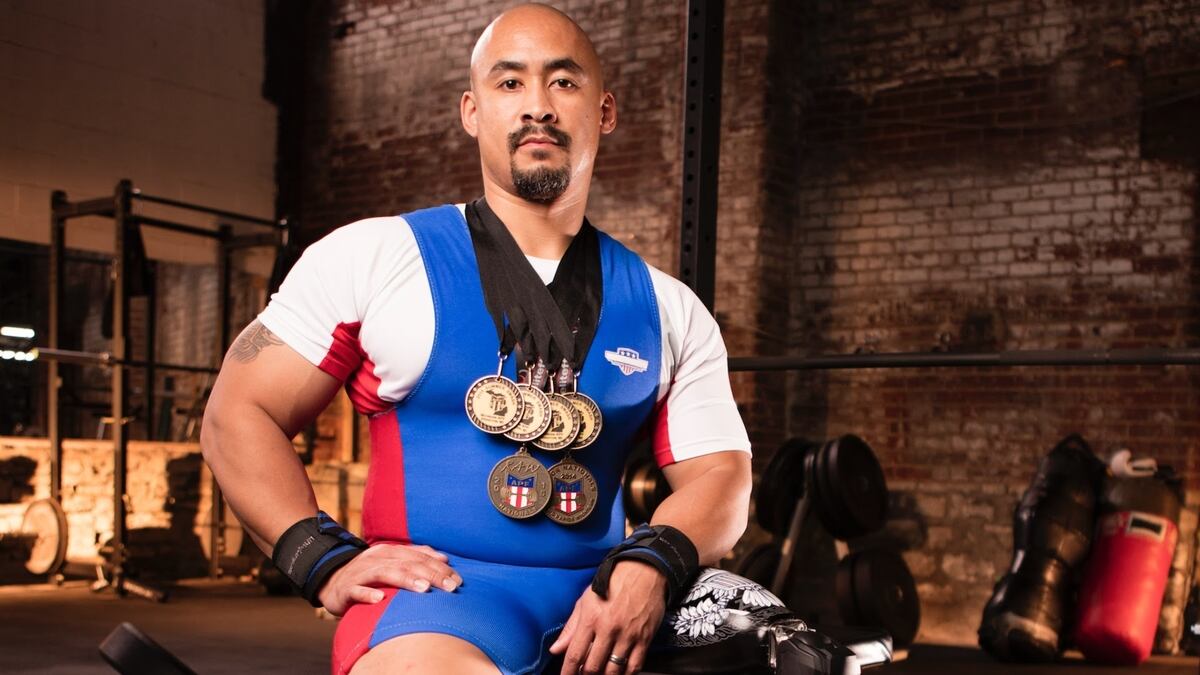
The latest from Disabled American Veterans, according to spokesperson M. Todd Hunter:
In September, DAV celebrated 100 years of service to our nation’s veterans. Despite the challenges presented by the ongoing pandemic, DAV has continued to provide, free of charge, benefits and employment resources to veterans nationwide. We have been providing unemployment relief to service-connected disabled veterans who lost their jobs as a result of COVID-19 and have had to pivot how we deliver services safely while meeting mandated protocols.
What is DAV’s mission and how can transitioning veterans fit in to help? What sorts of volunteer opportunities do you have?
When it comes to transitioning veterans, we appreciate any help they may want to provide but first and foremost we want to take care of them. We have folks at military bases to help them begin the claims process so they can get the benefits they earned as quickly as possible. After that, we want to help them find jobs and work with a partner to put on career fairs. In 2019, we hosted 144 traditional and virtual fairs.
But we do appreciate any assistance we can get. Our VolunteerforVeterans.org application helps connect veterans in need of help with people who want to support them. But it’s been hurt a lot by the pandemic. We have a ton of opportunities at VA medical facilities and through our Transportation Network that helps veterans get free transportation to and from their medical appointments.
On a typical year, DAV provides more than 600,000 rides each year at no cost to help veterans get to medical appointments at VA medical centers. Volunteering with the DAV Transportation Network is a simple and fulfilling way to give back to those who served. And we’re going to need more volunteers to help veterans coming out of the pandemic.
How does DAV differ from other VSOs?
We are the congressionally chartered voice of our nation’s veterans who were forever changed in service. We offer similar services as other organizations, but we do it on a much larger scope. Our benefits advocates represent more claims and our training and network of resources make us unique in that area. We have the largest volunteer network in the country and we are the most prolific charity when it comes to connecting veterans with employers. We help more than a million veterans every year and our focus on service and advocacy make us unique.
What can DAV offer to transitioning veterans?
Our National Employment Program provides crucial assistance in a variety of ways, including direct engagement, online tools and resources found at jobs.dav.org, and hosting more than 140 physical and virtual career fairs each year. Since 2014, DAV has hosted more than 680 career fairs with more than 155,000 job offers being extended for the nearly 235,000 veterans and spouses who have attended. Our online tools and resources include the many companies we work directly with, resumes tips, mentoring and entrepreneurship resources, and a job board with more than 200,000 current opportunities.
Likewise, DAV works directly with hundreds of companies who are seeking the skills and talents they know they can only find within the military and veteran community, so we also have dedicated resources for those companies, including our “DAV Guide to Hiring and Retaining Veterans with Disabilities,” which was launched in October 2017 and re-launched in October 2019 with updated information. The Hiring Guide, which has been received so well in the veteran employer community, can also be found at jobs.dav.org. It is a free, practical solutions guide to assist companies who are challenged with obstacles or barriers in their hiring process, and it provides them with valuable tools and resources to overcome these hurdles often encountered.
What challenges has the current pandemic introduced to DAV and how have you overcome them?
In March, DAV had to quickly pivot from a full schedule of physical career fairs and move to a full schedule of virtual career fairs through the end of 2020. This was compounded by the extreme spike in unemployment across the nation, but specifically within the veteran community. So, DAV worked tirelessly to ensure that we provided consistent messaging that companies were still hiring — still seeking the skills and talents that veterans possess — and DAV has not wavered in hosting virtual career fairs. Additionally, DAV established a COVID-19 Unemployment Relief Fund to provide financial aid to service-connected disabled veterans who lost employment or income in the wake of the virus’s outbreak. Since April, more than $1.8 million in grants have been distributed to veterans in need. The relief, which is made possible through generous donations from the American public and corporate sponsors, has helped our nation’s veterans pay bills, obtain food and provide for their families during these difficult and uncertain times.
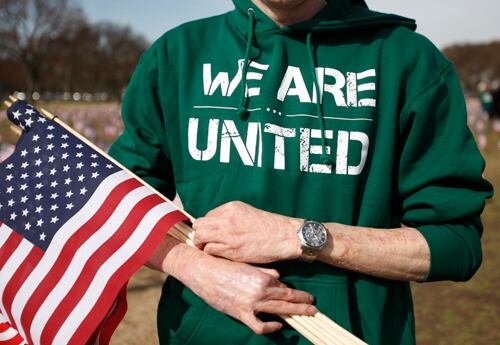
The latest from Iraq and Afghanistan Veterans of America, according to spokesperson Hannah Sinoway:
IAVA continues to advocate for the veteran community and recently celebrated the passage of the Commander John Scott Hannon Mental Healthcare Improvement Act, which will provide much needed resources to provide critical support to combat veteran suicide.
IAVA continues to recognize and improve services for women veterans and recently celebrated passage by the Senate Veterans Affairs Committee (SVAC) the Deborah Sampson Act, the centerpiece of IAVA’s ground-breaking #SheWhoBorneTheBattle campaign launched in 2017 to fill gaps in care for women veterans.
Veteran needs remain high and unfortunately veterans are disproportionately impacted by the impacts of the coronavirus pandemic. IAVA provides 24/7, free, confidential support and connections to resources for ALL veterans across the country, through our cutting-edge, best in class Quick Reaction Force (QRF).
IAVA will be hosting its first ever virtual Support America’s Veterans (SAV) March on Veterans Day. This event is a first of its kind virtual parade across our country.
IAVA continues to raise awareness about the serious impact from burn pits and toxic exposures.
What is IAVA’s mission and how can transitioning veterans fit in to help? What sorts of volunteer opportunities do you have?
IAVA’s mission is to connect, unite and empower post-9/11 veterans. Join our fight and take action.Join us on social media and help us spread the word. Apply for our senior leadership development program Storm the Hill. More info on both of the above here.Utilize our Quick Reaction Force and share with anyone in the community who is in need of help. More info here.
How does IAVA differ from other VSOs?
Digitally savvy and connected, provides best in class advocacy on a national level, direct assistance for any veteran through our Quick Reaction Force, membership opportunities and has a national media presence to raise awareness about issues impacting veterans.
What can IAVA offer to transitioning veterans?
Quick Reaction Force: Storm the Hill, advocacy, free membership
What challenges has the current pandemic introduced to IAVA and how have you overcome them?
Veteran needs are increasing and we relaunched our Quick Reaction Force program this year, to serve more veterans and offer 24/7 help to effectively respond to the growing needs of our community. We have pivoted to virtual events, since most in person events are not realistic at this time.
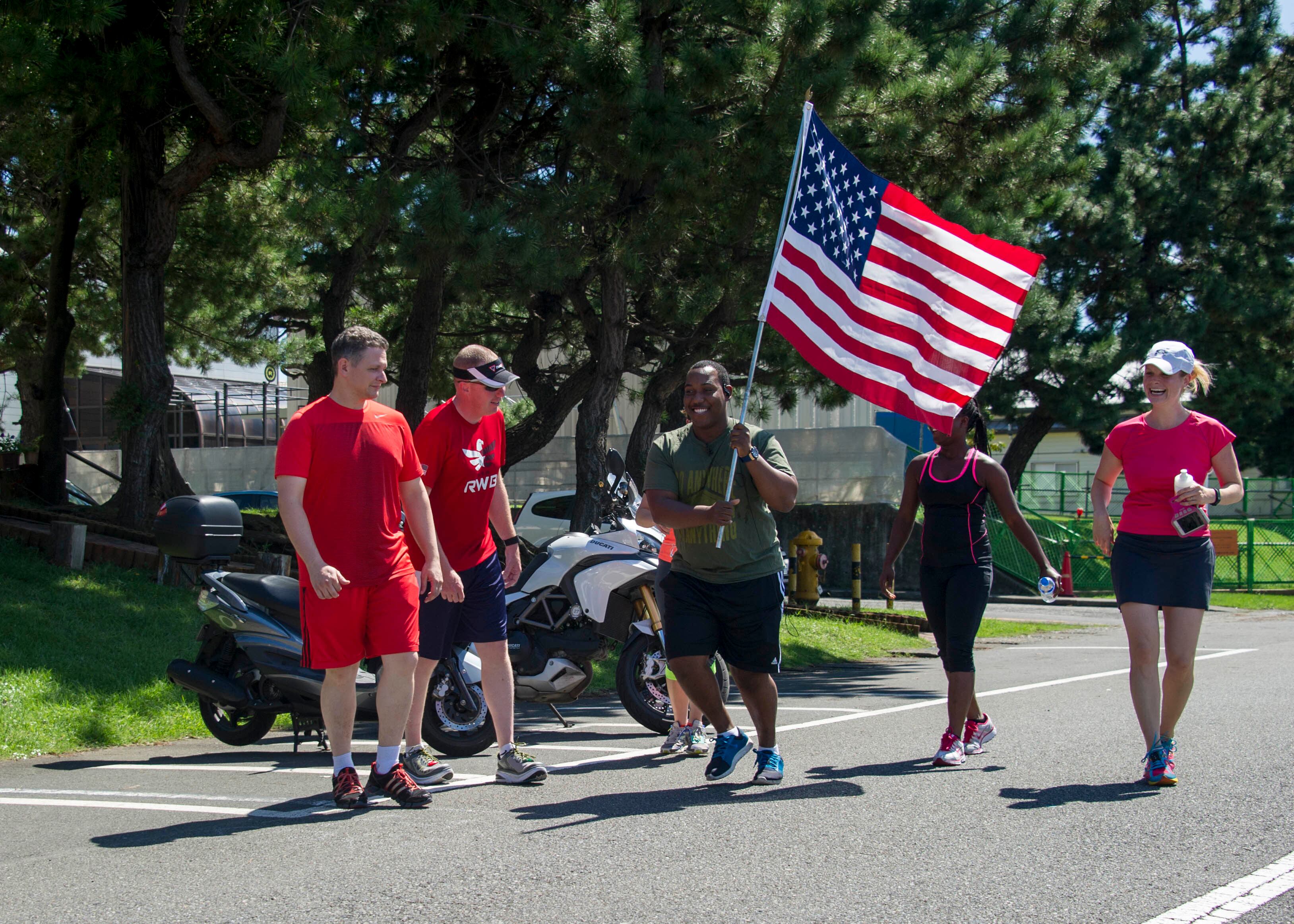
The latest from Team Red, White and Blue, according to spokesperson Margaret Britten:
On Nov. 11, Team RWB is hosting WOD for Warriors. WOD for Warriors is an annual functional fitness event for veterans and supporters to show their appreciation for the men and women who served our country. Virtual options are available this year! Interested participants can register at teamrwb.org/w4w
Also on Nov. 11, Starbucks is supporting the mental health and well-being of our nation’s veterans by donating 25 cents per every hot brewed coffee sold to Team RWB and Headstrong.
This Thanksgiving, Team RWB is hosting its first-ever Turkey Trot known as Rock The Trot! The event is focused on gratitude and is an opportunity for veterans and supporters to look back at what they’re grateful for. Participants can walk, run, ruck, or roll. Details are available at teamrwb.org/rockthetrot and in the Team RWB App.
What is RWB’s mission and how can transitioning veterans fit in to help? What sorts of volunteer opportunities do you have?
Volunteers are the backbone of Team RWB offering a variety of opportunities to get involved. Team RWB volunteers, known as Eagle Leaders, do everything from planning special events to leading regular activities and veteran outreach. Volunteer opportunities are also offered as part of regular membership. Local chapters often volunteer in their communities. A few examples include at races hosting water stops, hosting events at local veteran homes, clean up and tear down of veteran-focused events and ceremonies, and much more.
How does RWB differ from other VSOs?
Team RWB is forging the leading health and wellness community for our nation’s veterans. Team RWB is a 200,000-plus member strong organization with more than 200 chapters nationwide offering local events and creating engaging communities for veterans after they leave the service. Team RWB is the only veteran service organization with a fully integrated mobile app (the Team RWB App) featuring virtual challenges, workouts, and events, uniquely positioning Team RWB to show our nation’s veterans that their best days are ahead of them, no matter what challenges they face.
What can RWB offer to transitioning veterans?
Team RWB offers our nation’s veterans a way to stay connected, active, and focus on their health and wellness with a community behind them. In a typical year, Team RWB chapters host around 42,000 events annually for veterans to participate in and build relationships in their local communities.
What challenges has the current pandemic introduced to RWB and how have you overcome them?
Due to the pandemic, Team RWB local events have been limited following local health guidance. This increased isolation among military veterans and Team RWB quickly pivoted to support them during these challenging times. By offering more robust programming and events through the Team RWB App, Team RWB reached several milestones in 2020 with more than 180,000 veterans, National Guard, Reserve, and Active Duty service member engagements this year.
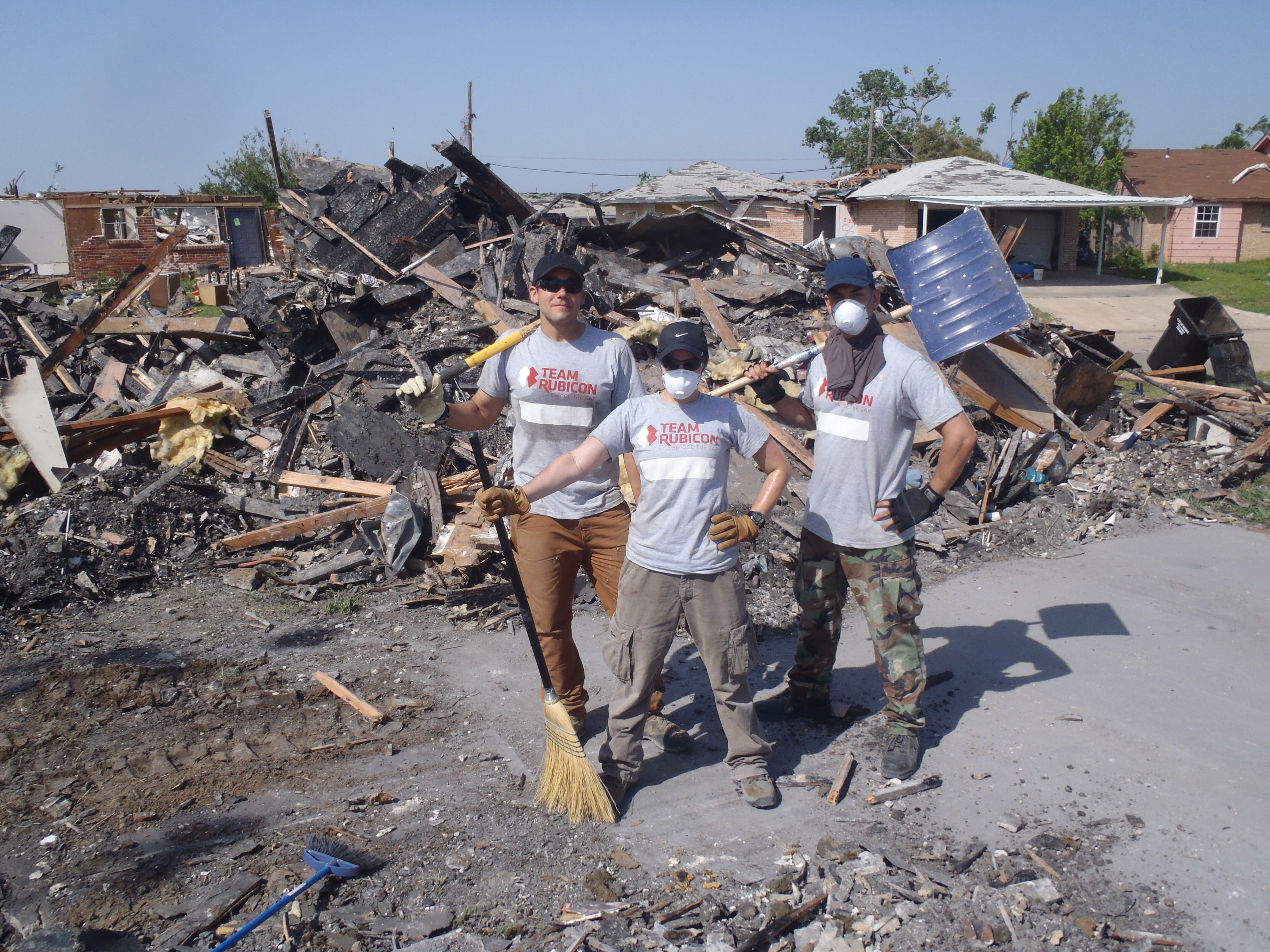
The latest from Team Rubicon, according to Jake Wood:
Team Rubicon continues to be a leader in disaster response and is currently serving the communities of Louisiana, Alabama, and Florida after Hurricanes Laura, Sally, Delta, and Zeta through expedient home repair, muck outs, chainsaw work, and roof tarping. We are winding down our COVID-19 operations, which included food distribution and delivery and testing sites, while encouraging our Greyshirts to continue making a difference in their local communities with the #NeighborsHelpingNeighbors program.
What is TR’s mission and how can transitioning veterans fit in to help? What sorts of volunteer opportunities do you have?
Team Rubicon’s mission is providing relief to those affected by disaster, no matter when or where they strike. Military veterans have unique skillsets that can be perfectly translated into disaster response. By pairing these skills and experiences with first responders, medical professionals, and technology solutions, Team Rubicon aims to provide the greatest service and impact possible.
Through this service, Team Rubicon provides our veterans with three things they lose after leaving the military: a purpose, gained through disaster relief; community, built by serving with others; and identity, from recognizing the impact one individual can make. Coupled with leadership development and other opportunities, Team Rubicon looks to help veterans transition from military to civilian life.
At Team Rubicon, we have volunteer opportunities for veterans from any MOS. Our Greyshirts come through all types of backgrounds and have a variety of skills they can use to help us accomplish our missions and we know there is no better group to get things done than veterans.
On a Team Rubicon mission, volunteers can be photographers, public information officers, mission leaders, or technological experts to ensure we are successful. For those who want to get dirty in the field, we provide training for specific tasks like chainsaw operations, roof tarping, and heavy equipment operators. Each operation is unique and requires different skills, but we will make sure you have the tools and training you need to be successful. While veterans lead our volunteer base, we accept civilians as volunteers, too, so as long as the desire to serve is there.
How does TR differ from other VSOs?
Team Rubicon is not a Veterans Service Organization, however, our missions are the same. Nearly 3 million men and women have served in uniform since 9/11. As these veterans return home, many experience challenges navigating their transition back into communities across the US and readjusting to civilian life. There is mounting evidence that continued service at home can lead to measurable improvements to this community’s overall well-being. We repurpose veterans' passion for service and highly specialized skillsets to service communities most in need.
What can TR offer to transitioning veterans?
The physical, mental, emotional, and social wellness of our country’s returning veterans are of national importance. As our veterans have returned home, many have experienced challenges navigating the transition back into civilian life.
While there are real and difficult issues plaguing our veterans — a lack of resources and understanding around mental health, homelessness, unemployment — Team Rubicon does not see our veterans as broken. At Team Rubicon, veterans are the agent of our mission, not the object.
By engaging our veterans in continued service through disaster response, not only does Team Rubicon provide relief to affected communities, but many veteran volunteers begin to regain the purpose, community, and identity that is difficult to find upon leaving the armed forces.
Team Rubicon also offers a program for veterans called the Clay Hunt Fellowship Program. The Clay Hunt Fellows Program opens quarterly and equips the veteran with tools to redefine their purpose and identity out of uniform for a life of continued service. Fellows will complete a six-month Base Camp curriculum focused on emotional intelligence through strengths finders discovery, self—awareness exploration and personal assessments, focused cohort discussions, reading, and guided self-reflection assignments. Upon completion, Fellows will be equipped to better lead in their communities and within Team Rubicon.
What challenges has the current pandemic introduced to TR and how have you overcome them?
The COVID-19 pandemic has forever changed the way Team Rubicon responds to missions. Because of the pandemic, we have done things and expanded our capabilities in ways we never could have imagined, including domestic medical ops, supporting food security and standing up mobile testing sites. We noticed that many volunteers at food banks were in the high-risk category for COVID-19, so we established a partnership with Feeding America to have our Greyshirts fill in those roles.
We sent our volunteer medics to the Navajo Nation to help decompress their hospitals. We partnered with Atrium Health and Verily Life Sciences to stand up mobile COVID-19 testing sites. In addition to all these new operations, disasters never stopped. We continued to deliver on our core mission of disaster response while following CDC guidelines and created new protocols to keep those we help, our volunteers, and the communities we return to safe.
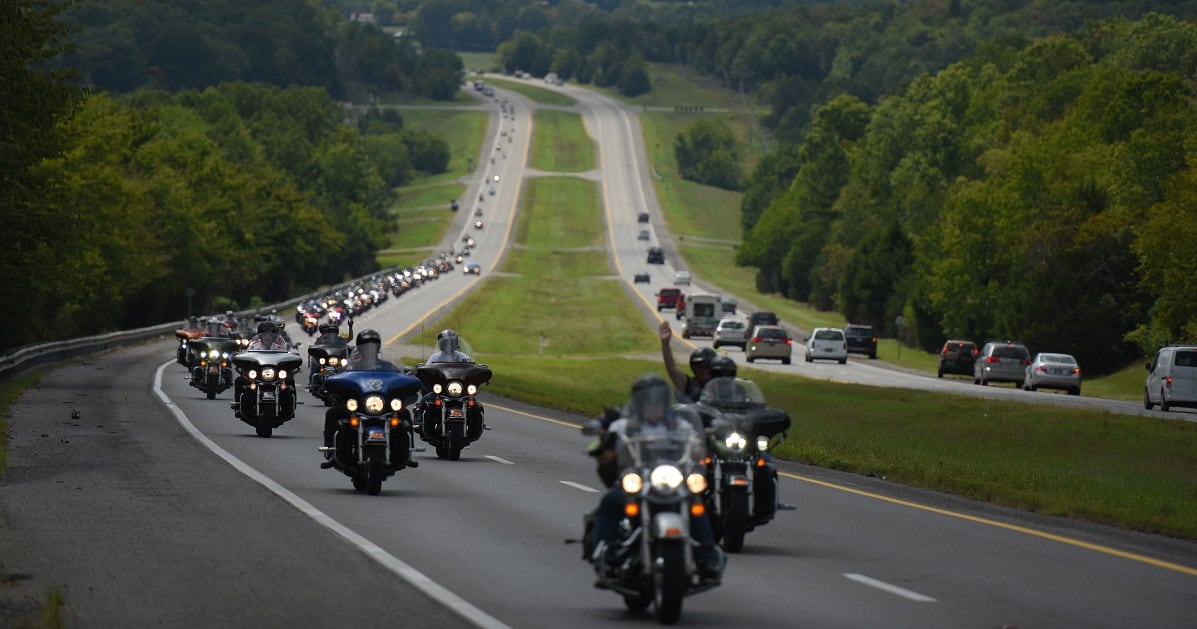
The latest from The American Legion, according to spokesperson John Raughter:
The American Legion is encouraging Legionnaires to conduct Buddy Checks. This campaign encourages veterans to reach out to their brothers and sisters-in-arms and check on their wellbeing. More than 20 veterans a day take their own lives. Many veterans are feeling especially isolated during the COVID-19 pandemic. The American Legion strongly believes in Veterans Strengthening Veterans. Sometimes all it takes is a sympathetic ear to make a difference in a veteran’s ability to cope with difficult circumstances.
The American Legion is encouraging Congress to pass S.4657 and H.R. 4290, bipartisan bills that would require the Department of Veterans Affairs to designate a Buddy Check Week. It would increase resources to the national crisis hotline and require VA to develop and implement collaborative education opportunities for veterans to learn how to conduct wellness checks.
What is TAL’s mission and how can transitioning veterans fit in to help?
The American Legion was founded by transitioning veterans. Months after World War I ended, a group of U.S. veterans gathered in Paris, France, to address the need for a new organization that would advocate for veterans returning from war. The organization was founded on four pillars – the wellbeing of veterans, a strong national defense, patriotic youth programs and Americanism.
In 1944, a group of Legionnaires led by Past National Commander Harry Colmery, drafted the Servicemen’s Readjustment Act — famously known as the GI Bill. By providing opportunities for higher education, home ownership and vocational training, the GI Bill helped the United States avoid another Great Depression following World War II.
The American Legion has used its enormous influence in Washington to assure the passage of subsequent GI Bills and other veterans benefits.
Through a network of more than 12,000 posts across the United States and overseas, transitioning veterans and those still on active-duty are welcome to join The American Legion and volunteer in the diverse selection of programs offered at the community, state and national levels.
What sorts of volunteer opportunities do you have?
In addition to advocating for veterans and the military, Legionnaires volunteer nearly one million hours a year at VA Medical Centers and facilities across the country.
The American Legion Riders are motorcycle enthusiasts who raise significant funds for the American Legion Legacy Scholarship Fund, which benefits the children of servicemembers who died or were seriously disabled on active-duty since the 9/11 attacks. The American Legion also operates a Veterans & Children Foundation, Operation Comfort Warriors and other great programs.
Its youth programs are some of the best in the country and include Boys State and Boys Nation, American Legion Baseball, Junior Shooting Sports, the High School Oratorical Scholarship Program and a number of other volunteer opportunities.
How does TAL differ from other VSOs?
Through its network of more than 12,000 posts in communities from coast-to-coast and even overseas, The American Legion has enormous influence at the community, state and national levels. In fact, there are twice as many American Legion posts in the United States as there are Walmarts. The American Legion is by far the nation’s largest veterans organization and the most influential voice for military members and their families. The American Legion is dedicated to the proposition of veterans strengthening veterans and offers the widest variety of programs of any nonprofit organization.
What can TAL offer to transitioning veterans? The American Legion has more than 3,000 highly trained and accredited service officers who help veterans and their families obtain benefits that they have earned. They do this free of charge and regardless of whether the veteran is a member of The American Legion. The American Legion also sponsors career fairs for transitioning military members, veterans and spouses. We also offer transitioning veterans the opportunity to be valued members of a larger family — The American Legion Family.
What challenges has the current pandemic introduced to TAL and how have you overcome them?
The American Legion was founded during a global pandemic and has responded to the current COVID-19 crisis in a manner that would have made the original Legionnaires of 1919 proud. Throughout the national emergency, American Legion National Commander Bill Oxford has continued to lead the nation’s largest veterans organization as many American Legion posts have endured shutdowns while stepping up their responses to the needs of veterans and their local communities.
It was hard for a close-knit family such as The American Legion to socially distance but veterans know how to adapt and overcome. Early on, many American Legion posts provided personal protective equipment to frontline workers when it was still in short supply. Other posts organized food and relief drives in their parking lots. On September 15, The American Legion Department of Texas hosted a free virtual career fair, which was attended by nearly 800 veterans and military family member jobseekers. It included 220 hiring companies. A similar job fair is scheduled for North Carolina on Nov. 17 and can be visited by logging on to www.legion.org.
American Legion posts and departments have held blood donation drives throughout the pandemic. Legionnaires have continued to testify before congressional committees, meet with the Department of Veterans Affairs and communicate with the White House on the pressing issues facing America’s veterans.
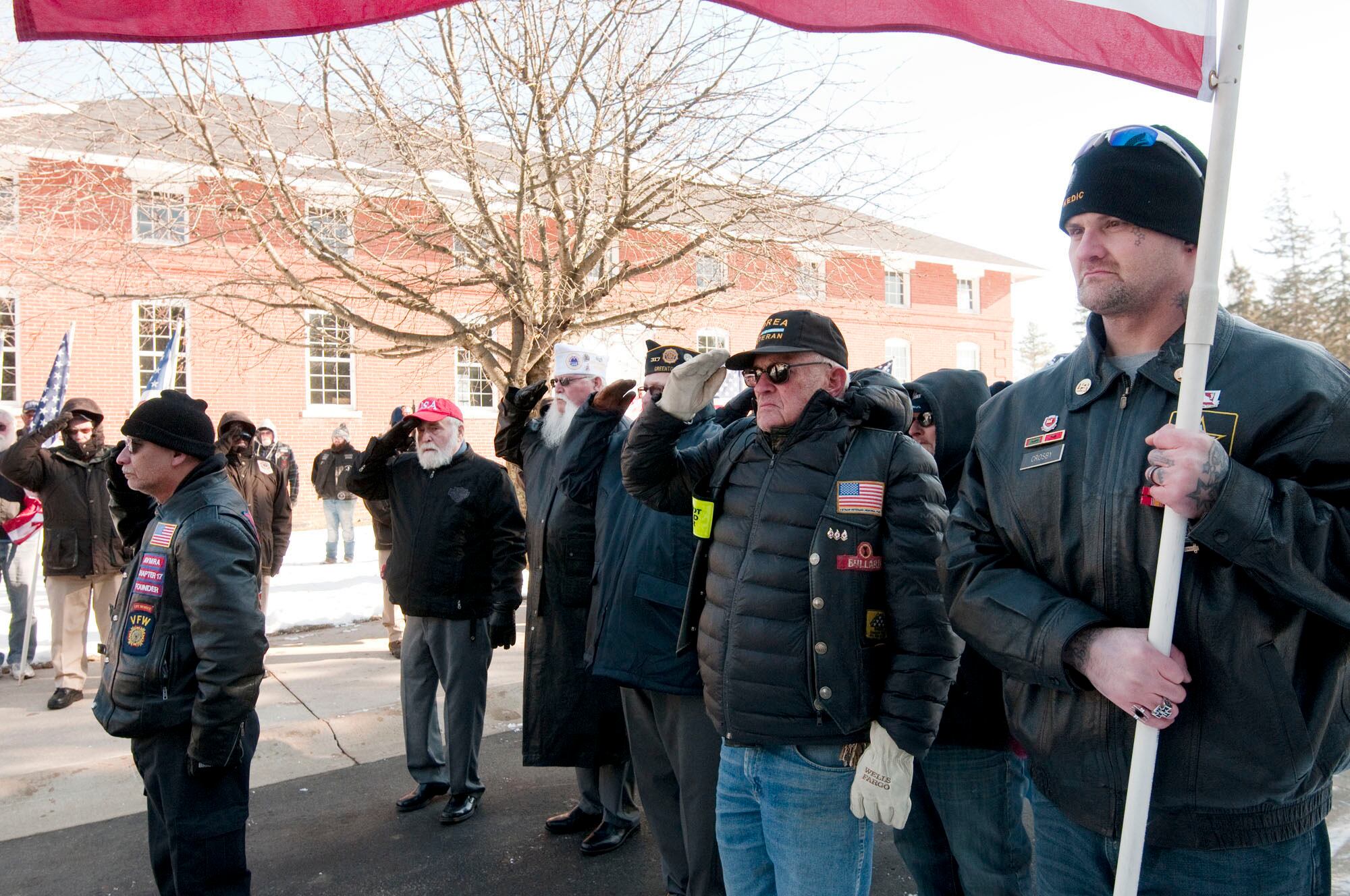
The latest from Veterans of Foreign Wars, according to spokesperson Terrence Hayes:
In late July, we installed our new VFW Commander-in-Chief Harold “Hal” Roesch II. In October, our newest communication platform was launched. The VFW Podcast will highlight critical issues, challenges and legislation affecting veterans, service members and military families worldwide. Please visit www.vfw.org for more information.
VFW was critical to the success of recent legislation that supports military members, veterans and their families. The Commander John Scott Hannon Veterans Mental Health Care Improvement Act of 2019, was signed into law last Saturday. This law supports VA as it continues to make improvements to veterans' mental health care by covering a strategic plan for veterans transitioning from active duty, pilot programs integrating alternative therapies, establishing a VA and DOD clinical provider treatment toolkit, improving care and services for women veterans, and expanding the mental health medical workforce.
What is VFW’s mission and how can transitioning veterans fit in to help? What sorts of volunteer opportunities do you have?
We are the premier combat veteran service organization in the U.S., dedicated to fostering camaraderie among veterans of overseas conflicts. Our services and advocacy are free of charge to all veterans, the military and our communities. We are Veterans helping Veterans.
More than nine million hours annually are logged by our members in volunteer programs such as the VA Volunteer Service (VAVS), where they directly support veterans that are hospitalized in VA medical facilities worldwide. Additionally, there are countless volunteer opportunities at the more than 6,000 VFW posts worldwide, which tirelessly serve their communities with projects ranging from feeding the homeless, supporting nearby military units, assembling Buddy Poppies (used to raise funds to support VFW programs) and supporting Student Veterans at colleges and universities in their area.
How does VFW differ from other VSOs?
Although our membership is restricted to combat veterans that have served in a war, campaign, expedition on foreign soil or in hostile waters, our services and advocacy to military members, veterans and their family members has no restrictions. We invest more time and resources into the training and development of our more than 2,100 service officers that assist military members and veterans with receiving VA benefits and entitlements.
What can VFW offer to transitioning veterans?
With a network of more than 6,000 VFW Posts, 2,100 service officers and 1.4 million members, the VFW is a place where transitioning service members and their families can access economic opportunities within in their communities. VA Disability Compensation is often a cornerstone to the economic stability of a transitioning veteran and their family, so we currently have service officers at 24 major military installations across the U.S. that serve as Pre-Discharge Claim Representatives. They are trained and accredited to assist transitioning service members with filing their VA disability claim and educating them on VA benefits and entitlements.
Additionally, VFW provides direct access to, and advocates for:
- Timely and improved transition assistance, including access to programs after they leave military service
- High-quality and sustainable education benefits
- Strong employment and training programs
- Small business development opportunities
- Civilian credentials or academic credit for military training
- Hiring preferences in the civil service and with large government contractors
- Education and training in new and expanding career fields
- Improved character of discharge review and appeals procedures
What challenges has the current pandemic introduced to VFW and how have you overcome them?
The VFW has been remarkable in identifying and adjusting to the changing needs of its customer during this pandemic. With the loss of jobs, the closing of veteran owned small businesses, suspension of college careers, and the social isolation driven by COVID-19, the VFW received a substantial increase in requests for assistance. We have responded to the needs of our veterans and their families with our Unmet Needs Program, sponsored by Burger King, which provides financial assistance, and the VFW Mental Wellness Campaign that provides support to those seeking mental health resources in their communities.
Additionally, we continue to assist our student veterans with our Help-A-Hero Scholarship, sponsored by SportClips.
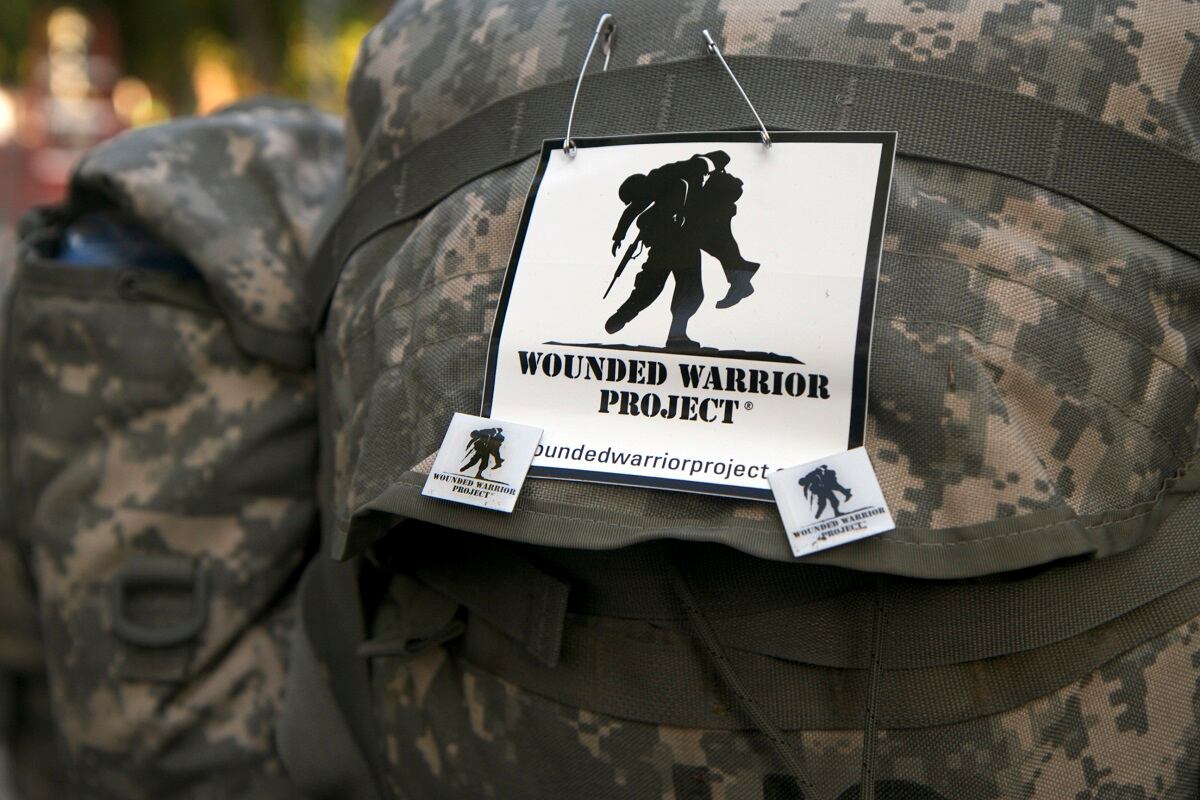
The latest from Wounded Warrior Project, according to spokesperson Joe Plenzler:
With Veterans Day fast approaching, WWP is gearing up for our “Honoring Our Warriors” – a virtual Veterans Day celebration to encourage Americans everywhere to celebrate Veterans Day from home. The virtual event will be hosted by former NFL quarterback and current football analyst for ESPN Jesse Palmer, and includes musical performances, as well as veteran tributes during the broadcast on Wed., Nov. 11 at 11:30 a.m. EST / 10:30 a.m. CST / 8:30 a.m. PST on the nonprofit’s Facebook Page and YouTube channel. WWP will encourage participants to share their own stories and veteran tributes throughout the broadcast. The nationwide virtual celebration will bring to life stories of strength, courage and hope through personal anecdotes from generations of military veterans, touching reunions and musical performances by multi-platinum singer Sara Evans and male a cappella group Straight No Chaser — all to honor the United States armed forces and celebrate America’s heroes
What is WWP’s mission and how can transitioning veterans fit in to help?
The mission of Wounded Warrior Project® (WWP) is to honor and empower Wounded Warriors, and our vision is to foster the most successful, well-adjusted generation of wounded service members in our nation’s history. We connect warriors, their families, and caregivers to peers, programs, and communities to ensure they have a network of support. We serve these groups through free mental and physical health and wellness programs, career and benefits counseling, and by providing ongoing support for the most severely injured. We empower warriors to live life on their own terms, mentor fellow veterans and service members, and embody the Wounded Warrior Project logo by carrying one another on a path toward recovery.
What sorts of volunteer opportunities do you have?
Wounded Warrior Project encourages people to help us serve wounded, injured, and ill veterans by donating, fundraising, and helping us raise awareness of the challenges warriors face. We do not accept any government money and are entirely donor supported. Warriors never pay a penny for our programs — because they paid their dues on the battlefield. Our supporters help us provide free services in mental health, career counseling, and long-term rehabilitative care that changes lives.
How does WWP differ from other VSOs?
Unlike most VSOs, WWP is not a membership-based organization. As a 501(c)(3) nonprofit organization, Wounded Warrior Project is transforming the way America’s injured veterans are empowered, employed, and engaged in our communities. Since 2003, we’ve been tireless advocates for our nation’s finest, improving the lives of millions of warriors and their families. Warriors never pay a penny for our programs and our free services in mental health, career counseling, and long—term rehabilitative care change lives. We’re committed to helping injured veterans achieve their highest ambitions.
What can WWP offer to transitioning veterans?
WWP provides transitioning military members a full array of programs and services focused on mental, physical, and financial health and wellness. Many transitioning veterans find connection through our Alumni Program, assistance through VA and DOD Benefits Service, and launch their next career through our veteran employment and career counseling Warriors to Work Program.
What challenges has the current pandemic introduced to WWP and how have you overcome them?
WWP has had a challenging and rewarding year. We have risen to the challenge of the COVID-19 pandemic, pivoted to online delivery of programs and services to protect the health of the warriors we serve, and provided $10 M in financial assistance and $2.1M in caregiver respite relief to those most affected by the pandemic.
Article updated to change attribution for Team Rubicon.
Jared is the manager of print design for Sightline Media Group's five magazines under the Military Times and Defense News banners.
